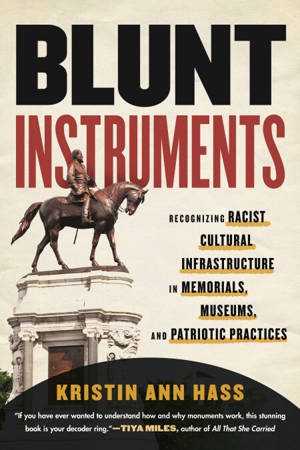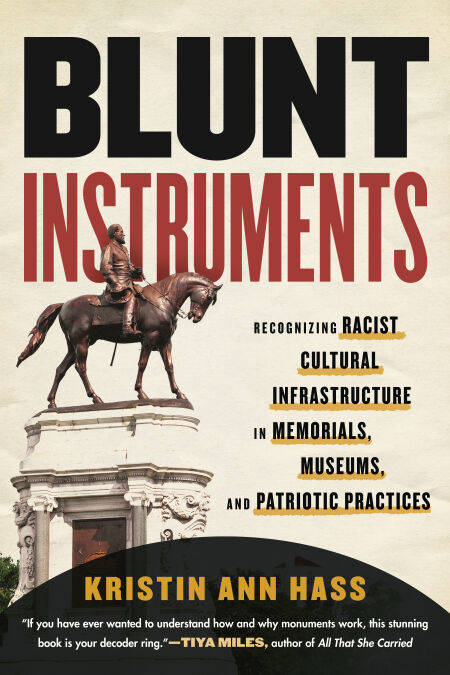
- Afhalen na 1 uur in een winkel met voorraad
- Gratis thuislevering in België vanaf € 30
- Ruim aanbod met 7 miljoen producten
- Afhalen na 1 uur in een winkel met voorraad
- Gratis thuislevering in België vanaf € 30
- Ruim aanbod met 7 miljoen producten
Zoeken
Blunt Instruments E-BOOK
Recognizing Racist Cultural Infrastructure in Memorials, Museums, and Patriotic Practices
Kristin Ann Hass
E-book | Engels
€ 17,69
+ 17 punten
Uitvoering
Omschrijving
A field guide to the memorials, museums, and practices that commemorate white supremacy in the United States—and how to reimagine a more deeply shared cultural infrastructure for the future
Cultural infrastructure has been designed to maintain structures of inequality, and while it doesn’t seem to be explicitly about race, it often is. Blunt Instruments helps readers identify, contextualize, and name elements of our everyday landscapes and cultural practices that are designed to seem benign or natural but which, in fact, work tirelessly to tell us vital stories about who we are, how we came to be, and who belongs.
Examining landmark moments such as the erection of the first American museum and Colin Kaepernick’s kneeling pledge of allegiance, historian Kristin Hass explores the complicated histories of sites of cultural infrastructure, such as:
· the American Museum of Natural History
· the Bridge to Freedom in Selma
· the Washington Monument
· Mount Auburn Cemetery
· Kehinde Wiley’s 2019 sculpture Rumors of War
· the Victory Highway
· the Alamo Cenotaph
With sharp analysis and a broad lens, Hass makes the undeniable case that understanding what cultural infrastructure is, and the deep and broad impact that it has, is essential to understanding how structures of inequity are maintained and how they might be dismantled.
Cultural infrastructure has been designed to maintain structures of inequality, and while it doesn’t seem to be explicitly about race, it often is. Blunt Instruments helps readers identify, contextualize, and name elements of our everyday landscapes and cultural practices that are designed to seem benign or natural but which, in fact, work tirelessly to tell us vital stories about who we are, how we came to be, and who belongs.
Examining landmark moments such as the erection of the first American museum and Colin Kaepernick’s kneeling pledge of allegiance, historian Kristin Hass explores the complicated histories of sites of cultural infrastructure, such as:
· the American Museum of Natural History
· the Bridge to Freedom in Selma
· the Washington Monument
· Mount Auburn Cemetery
· Kehinde Wiley’s 2019 sculpture Rumors of War
· the Victory Highway
· the Alamo Cenotaph
With sharp analysis and a broad lens, Hass makes the undeniable case that understanding what cultural infrastructure is, and the deep and broad impact that it has, is essential to understanding how structures of inequity are maintained and how they might be dismantled.
Specificaties
Betrokkenen
- Auteur(s):
- Uitgeverij:
Inhoud
- Aantal bladzijden:
- 256
- Taal:
- Engels
Eigenschappen
- Productcode (EAN):
- 9780807006726
- Verschijningsdatum:
- 23/01/2023
- Uitvoering:
- E-book
- Beveiligd met:
- Adobe DRM
- Formaat:
- ePub

Alleen bij Standaard Boekhandel
+ 17 punten op je klantenkaart van Standaard Boekhandel
Beoordelingen
We publiceren alleen reviews die voldoen aan de voorwaarden voor reviews. Bekijk onze voorwaarden voor reviews.








